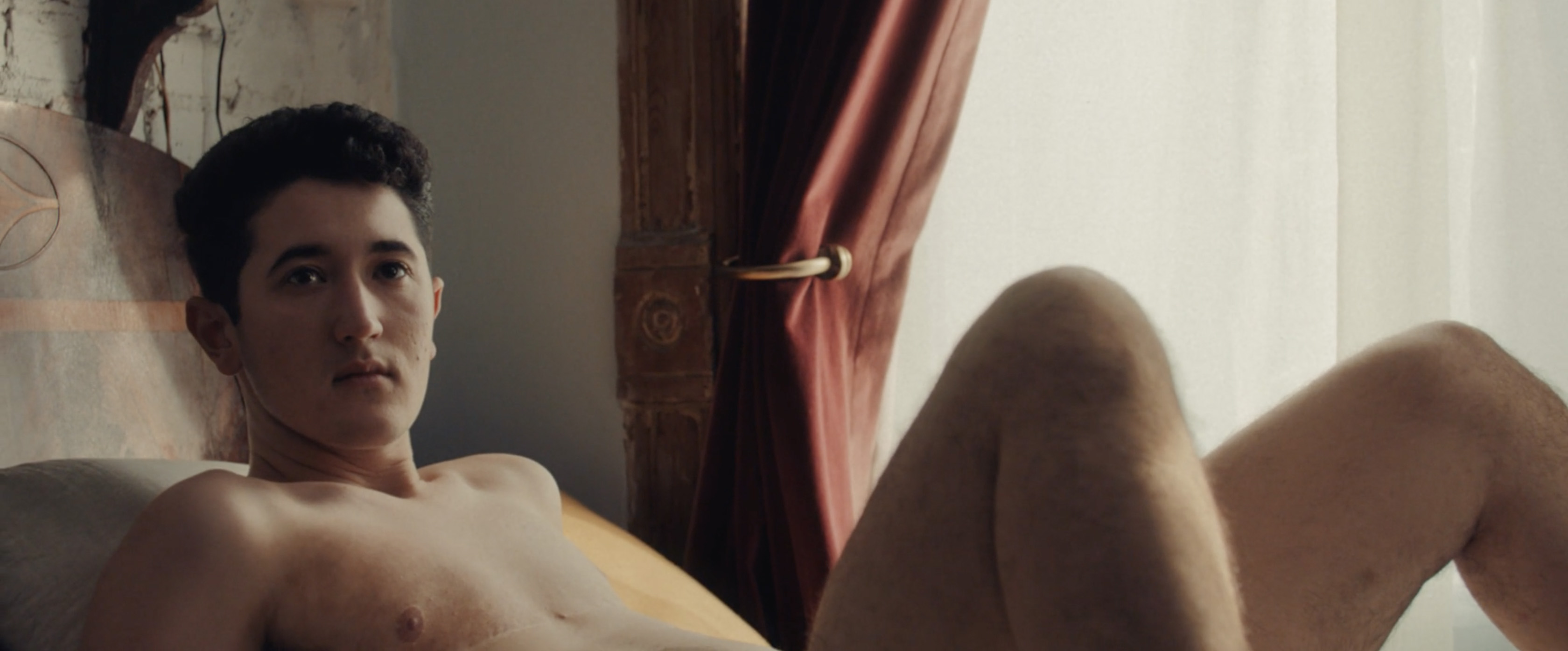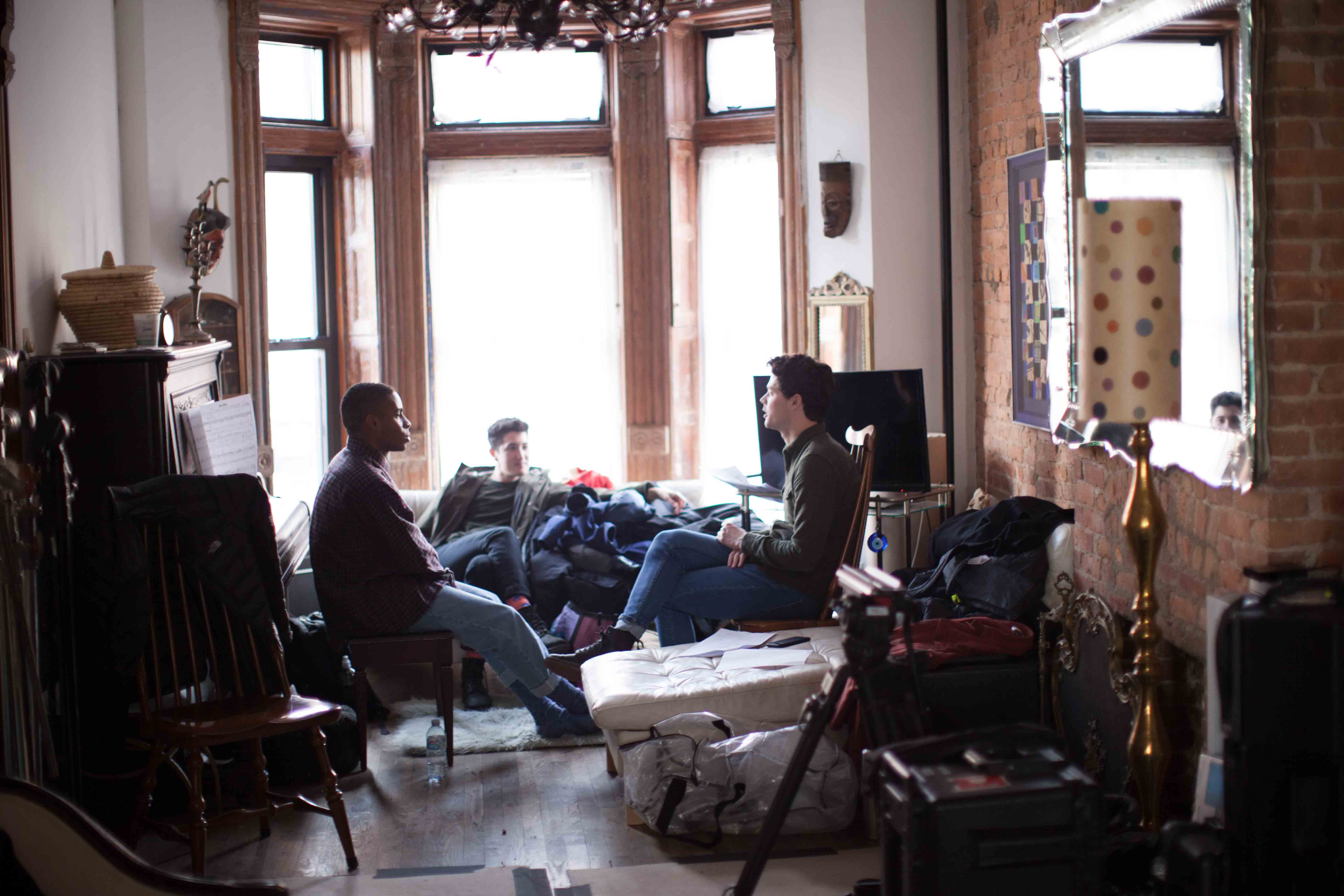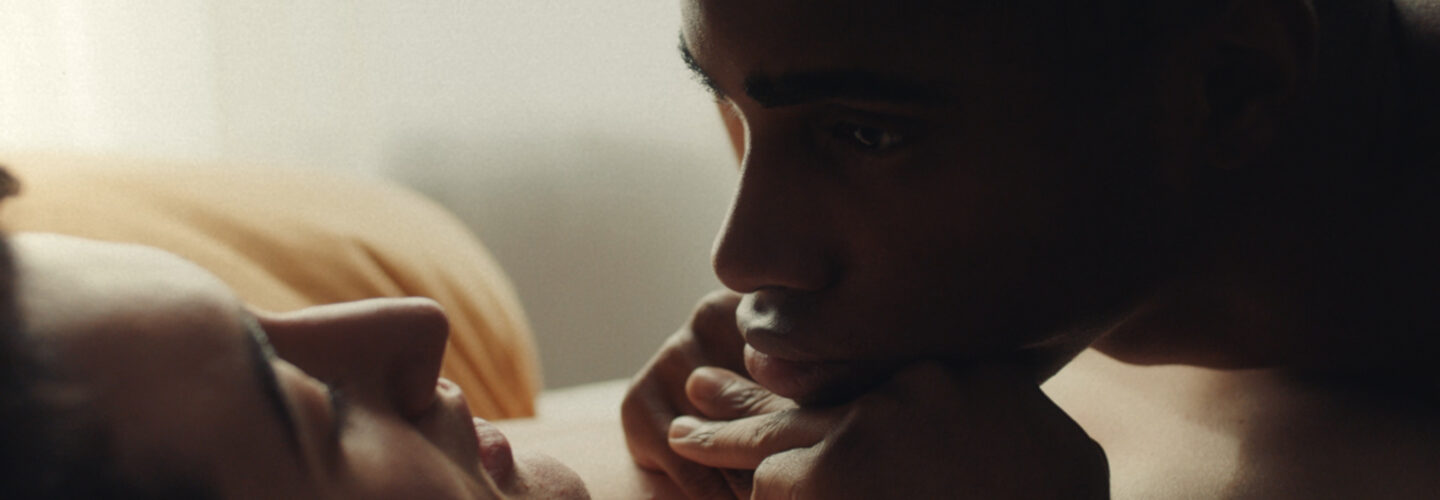
Film depictions of losing one’s virginity can usually be lumped into two categories: overly romanticised and orgasmic, or comically awkward and clueless – both cataclysmically inaccurate and misleading. And that’s just straight sex. Queer intimacy is much less explored and its portrayal, in both film and literature, has arguably been even more mismanaged and sugar-coated. By exposing the messy reality of it in his latest short Dirty, Director Matthew Puccini has developed a pure snapshot of the true colours of queer sex and in doing so has created a sex-positive and affirming piece of cinematic brilliance. A fact not lost on the Criterion Channel who programmed Dirty alongside Andrew Haigh’s acclaimed feature Weekend. Anchored by two of the most natural and committed performances we’ve seen in a long while, the ten minute drama perfectly captures the rush of falling in lust with raw, sophisticated sensuality and the result is disarmingly compelling. DN caught up with Puccini to chat about the film’s inspiration, process and takeaway.
You drew from personal experience for your previous short Lavender, can we assume that was also the case with Dirty?
Lavender was inspired by a specific personal experience while Dirty was more a response to a general feeling that I had in my late teens, this frustration of not knowing what to expect or what I was allowed to ask for during the first few times I had sex.
From lighting to set design and grade how did you land on the look of the film?
This was my first time working with a wonderful cinematographer named Matt Mitchell, who was very involved in figuring out the look of the film. He made a fantastic look book in response to our initial conversations that ended up being a key reference for the visual language – a lot of naturally lit interiors, soft window light, creamy skin tones, use of shadow, frames within frames, reflections, etc.
We wanted the film to feel rich, intimate, welcoming.
We initially wanted to shoot on 16mm and even once we abandoned that plan due to budget constraints we still tried to emulate some of the texture and warmth of 16mm in the lighting and the final grade. We wanted the film to feel rich, intimate, welcoming.
In regards to set design, we actually used my younger cousin’s bedroom in Bed Stuy, which gave us a great foundation to work from, and then our production designer, Christina O’Neill, brought in a lot of set dressing – small details to make the room feel like it belonged to a high school student. Some of it didn’t make it into the final film but I think it made the space feel real to the actors, which was even more important.

The sex scene is unapologetically honest and authentic. How did you bring that performance out of the young actors and how comfortable were they with this level of intimacy?
This is going to sound like a cop-out but so much of my work was done just by casting Morgan Sullivan and Manny Dunn. I just tried to spend as much time with them as possible, hanging out and getting to know each other. Once it felt like we were ready, we spent an afternoon choreographing the sex scene together, just the three of us, making sure that everyone felt comfortable with what was going to happen so that there wouldn’t be any surprises on the day.
On set, we made sure that the bedroom was kept extremely private – I believe it was just me, Matt, our sound mixer Vivan and the two actors in there while we were rolling. I also tried to limit the disruption between takes and keep them in the moment as much as possible, while also constantly checking in to make sure that they both still felt comfortable with what was going on.

From overly romanticised and completely unrealistic sexual intercourse to blue-stained sanitary towels – film and TV have done a superb job of sugarcoating the truth about sex and bodily fluids. How important was it for you to expose the mortifying reality?
I definitely wanted to show queer sex in a way that felt more honest then what I grew up with, whether that was in film, TV or in porn. Things get messy sometimes! It’s just a fact of life, but if we don’t show it or talk about it then it starts to feel taboo, and that’s when shame starts creeping in. Hopefully, the film makes it clear that there’s nothing to be ashamed of. It might be mortifying for Marco in the moment, but it was important to me that Graham reacts with kindness. The real issue is that Marco didn’t have access to information that he should have had access to.
I definitely wanted to show queer sex in a way that felt more honest then what I grew up with, whether that was in film, TV or in porn.



Lavender is a about a threesome and Dirty about losing your virginity – both subjects explored to death in film, though notably less so with queer characters. Yet, you’ve masterfully steered away from all the clichés and have instead given us a refreshingly new and eye-opening take on both. Why was that important to you?
Thank you for saying that! Like you, I’ve definitely seen plenty of films about threesomes or losing your virginity. But I think starting with familiar subject matter can actually be useful if it then allows you to subvert an audience’s expectations. With Lavender and Dirty, I was really interested in taking these situations that a lot of people seem to have preconceived notions about and trying to explore them with a bit more nuance and care. Not reinventing the wheel, necessarily, just offering a more complicated or ambiguous vantage point. I think audiences are a lot smarter than we give them credit for and respond when something challenges them.

What do you hope the audience – queer, straight and everyone in between – will take away from the film?
A few things: one, that queer sex education is vital and should absolutely be a part of any high school student’s education, queer or straight. And two, that there is a lot of power in seeing queer characters in stories where they aren’t being traumatized or oppressed. There’s this whole other landscape to explore outside of coming-out stories and tragic endings, where people are just stumbling through the minutiae of life, which to me is just as important to be putting on screen.
There is a lot of power in seeing queer characters in stories where they aren’t being traumatized or oppressed.
You’ve been working on developing a feature for a while now. How’s that coming along?
You know, I think after making a successful short there’s a certain pressure to make your first feature, or even just to SAY that you’re making your first feature, and there was a period after Lavender last year where that was driving me absolutely nuts because I just didn’t have the right concept yet. I had to relax and just accept that I couldn’t rush the process of arriving at that idea. Now I feel like I’m finally chipping away at something that actually matters to me. It’s a slow process, though – a lot of days are just spent thinking, and then maybe there will be a spurt of writing, and then many days spent thinking again. I don’t want to rush it.


